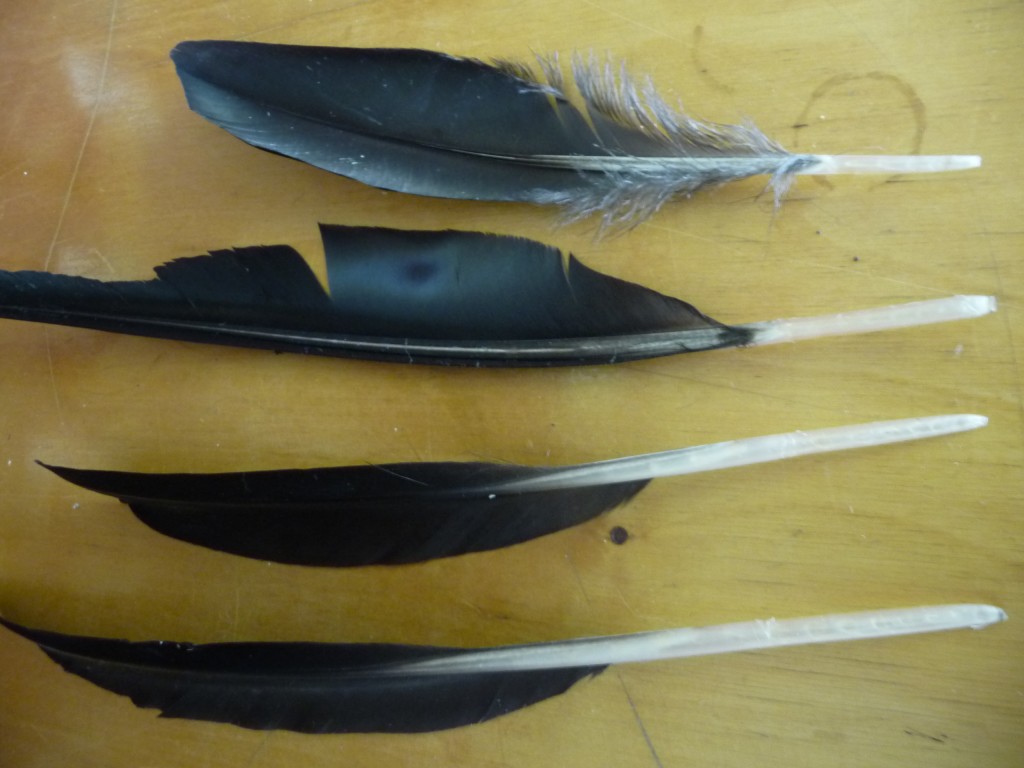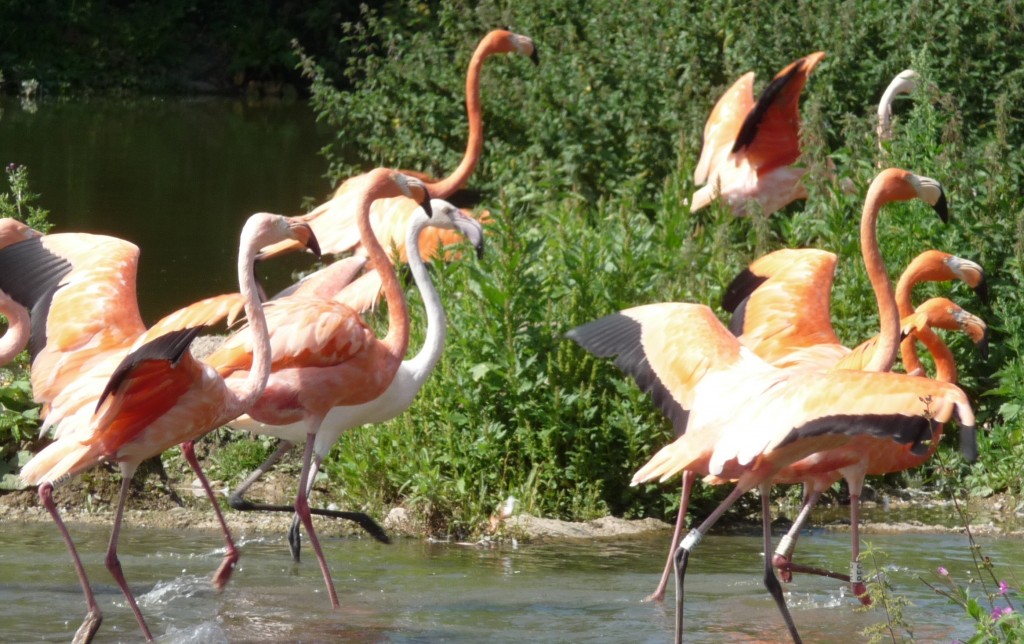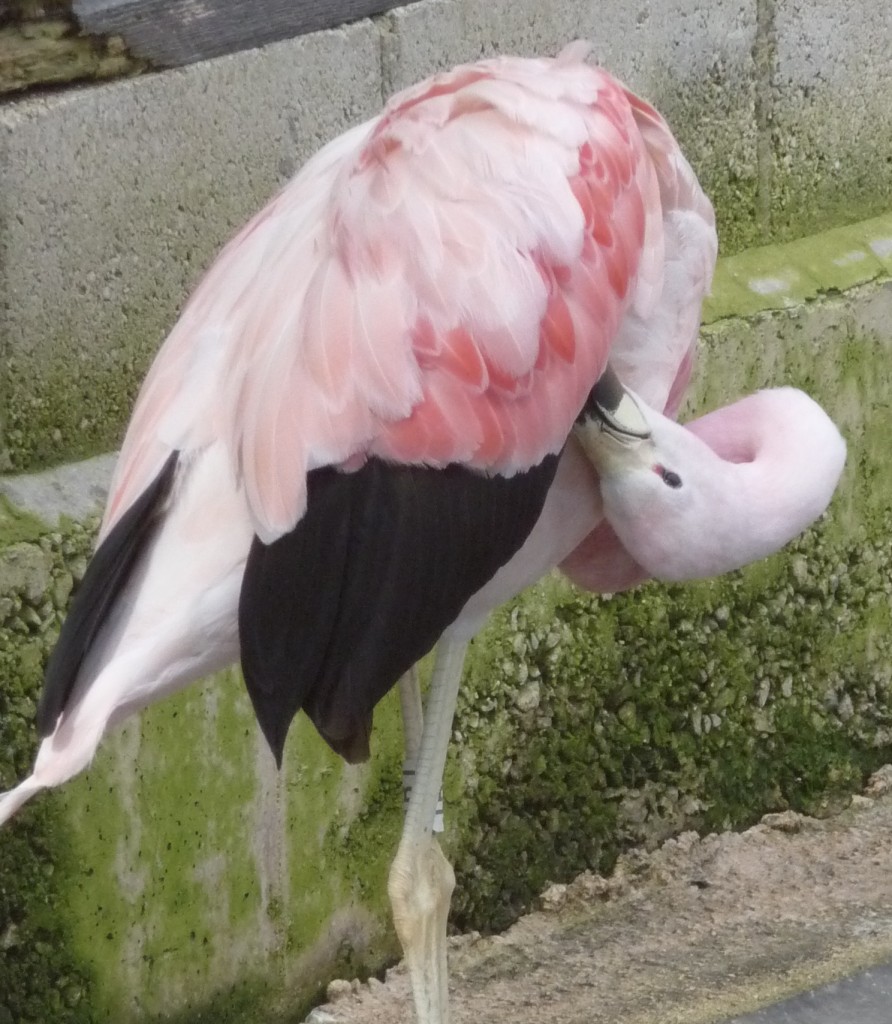Not quite pink all over...
Look closely at the flamingos next time you visit a WWT Wetland Centre that houses these birds and you see that whilst everyone associates the colour pink with them, not all feathers on a flamingo are of that hue. In fact some of the most important feathers on a flamingo's body are jet black in colour. These are their primary and secondary wing feathers, the feathers that form the outer edge of the flamingos wings. Lots of flying birds that are comparatively heavy, or not too aerodynamic in shape (such as some storks and cranes and, indeed, flamingos) need strengthened wing feathers to cope with the pressure of lifting the bird into the air. Black feathers are typically more robust due to the presence of the pigment melanin - which gives the feathers their black colour, and hence such heavy birds employ this trait to provide more strength and stability for flight.
The photo above shows several black wing feathers from a Caribbean flamingo. The birds moult their feathers when their current ones are worn and need replacing. You can see the frayed edges on these feathers that are indicative of ones that have been dropped during a moult.
Not only are these black feathers useful for the purpose of flying but they can also be used in the flamingos' courtship display as they can provide a contrasting "flash" of colour against the flamingo's overall pink background. Look out for the birds performing their ritual dances from the early spring onwards, and you will see the types of performance that their black wing feathers are used in.
The photo above shows the contrast between the black outer edges of a flamingo's wings and their vibrant body plumage. The black wing feathers are normally hidden unless the flamingo is taking-off, landing, flying, or displaying and, in this case, running and flapping its wings to keep balanced. However in some species they are on display all of the time and can be used as identifying features; see below in the photo of the Andean flamingo.
The Andean flamingos have conspicuous black "tails" that differentiate them from other species of flamingo. The black feathers are not from their tail itself but rather their folded primary feathers that sit over their actual tail (which is rather short). Look out for these differences when you're next visiting.





